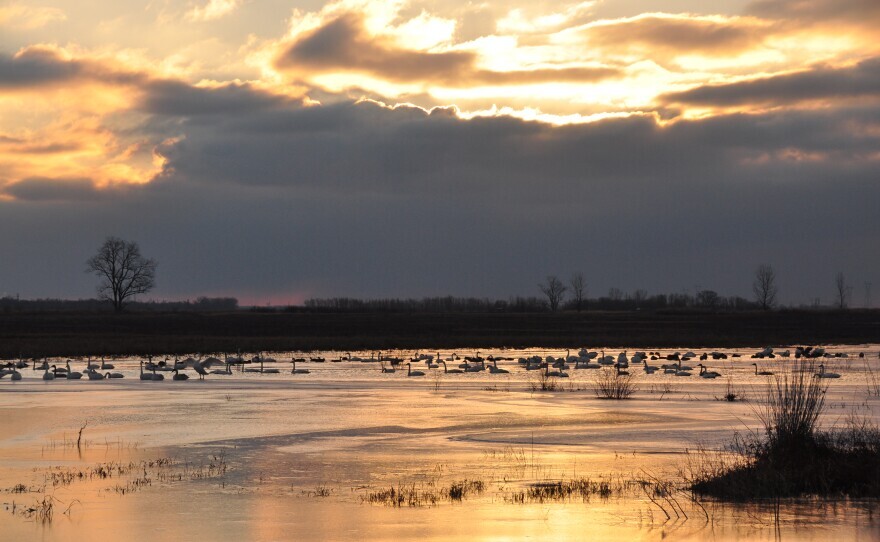The largest species of waterfowl in North America is on its way back to wetland areas north of St. Louis.
Trumpeter swans were nearly hunted to extinction in the early 1900s, but targeted conservation efforts helped populations recover. Once limited to just a handful of individuals, hundreds of swans now spend the winter at the Audubon Center at Riverlands in West Alton.
With a wingspan stretching more than seven feet, trumpeter swans migrate thousands of miles south to the central U.S. each year from breeding grounds in northern Canada.
Their deep bugle-like calls have begun filling the skies at the Audubon Center at Riverlands, said Tara Hohman, a conservation science associate at the reserve.
“We’ve already had a couple families of swans come in, but it’s still early in the season,” Hohman said. “We’re expecting to see many more as the winter months continue.”

The number of swans spotted in these wetlands has swelled in recent years — from just five in 1991 to 870 last year. Most are trumpeters, although the tundra swan is also a frequent visitor.
Every year for the past decade, a dedicated group of volunteers has tracked swan populations at the reserve, rising before dawn to count the snowy white birds.
Though populations have rebounded in recent years, collecting basic data on migrating swans helps scientists gauge how well the species is doing as it faces a range of environmental threats, including climate change, flooding and habitat loss.
“Keeping an eye on them and how their population is changing is really crucial if you're trying to keep that species on the landscape,” Hohman said.
To see the largest number of swans, Hohman suggests visiting the reserve within an hour of sunrise. Swans will be arriving daily in the coming weeks, with numbers peaking in late December and early January.
If you go:
- Audubon Center at Riverlands, 301 Riverlands Way, West Alton, MO
- Gates are open from sunrise to sunset
- Center hours: 8 a.m. to 4 p.m. Tuesday through Saturday
- Free admission
Follow Shahla on Twitter: @shahlafarzan





